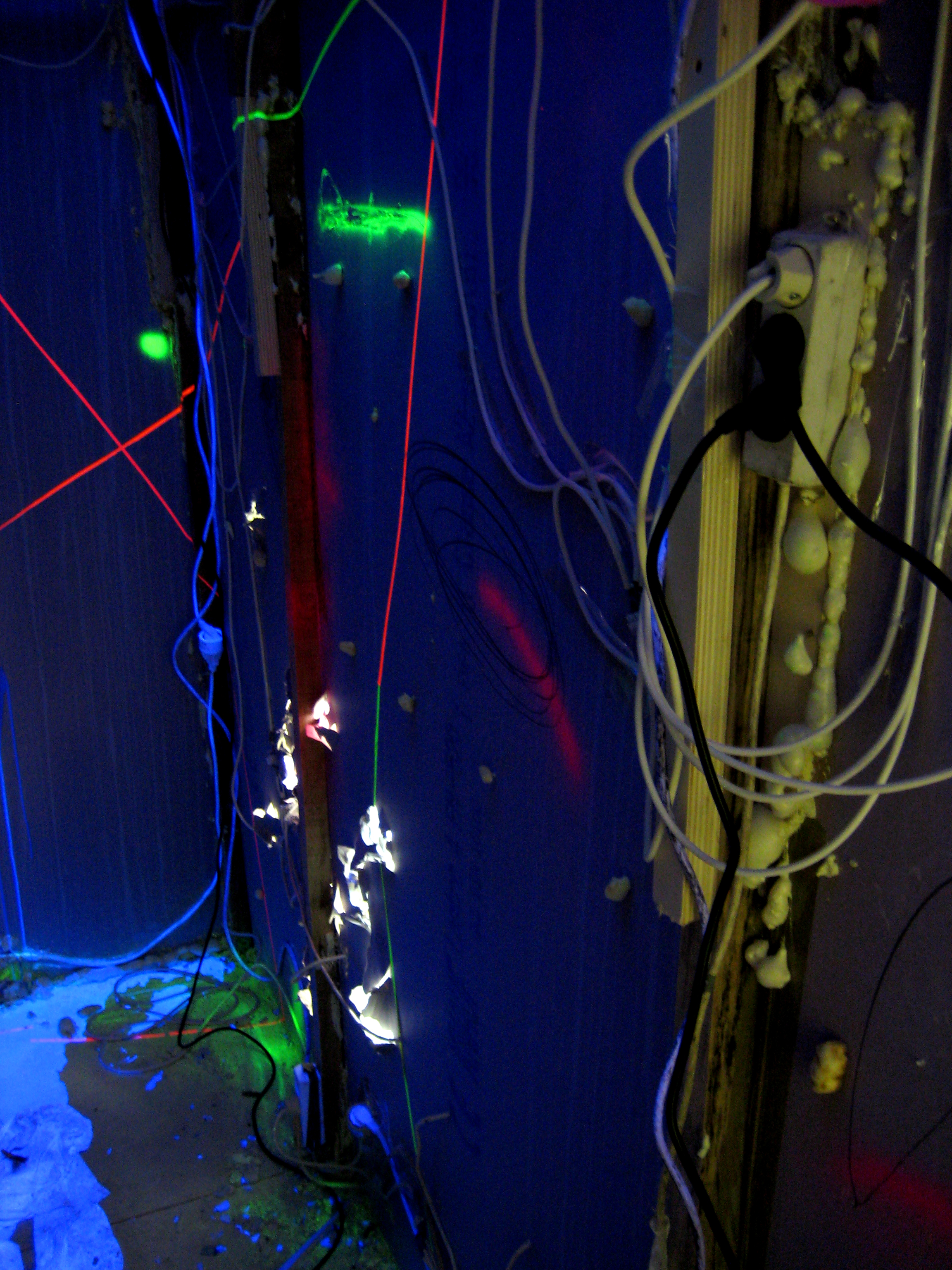Installation view; wooden structure and panels, plasterboards, commercial city posters, glue, paint, 33 neon lights, video projection and sound, DVD loop of 8 min
410 cm x 280 cm x 60 cm
The inspiration for this work came from Kubrick’s Space Odyssey 2001 black monolith, because of its form and radiating sound. The intention was to create a black box of contemporary society (which eventually became a self-portrait). A plain container on the outside, packed with many disturbing elements on the inside. The piece was accessible from all sides, but it created difficulties for the public; at the back, an installation neon lights were creating a beautiful sight from afar, but once inside the room, it became unbearable. The public could go inside the box, but once in, the sound became so intense it was impossible to stay. The smell, created with large quantities of spilled detergent and annoying flickering of the UV –lights had the same effect.
Along with the installation, the artist developed a performative alter-ego called “Bobby, the Neighbour.” For the opening, he disguised himself walked around like any other visitor. On the peek of the opening, he closed the only entrance door of Palazzo Tito with a chain and a lock. What followed was a half an hour of a crescendo of the nervous atmosphere created by the public locked in the exhibition space. After a while, he was pushed to the wall with demands from the public of handing over the key. As a performing climax, the artist starting screaming and showing the key, eventually placing it in his "secondary" anus (Bobby’s sewed body). After a while, the bravest took the challenge to get the key. Angela Vettese (the legendary Italian art critic) chased him around the exhibition space before eventually being tackled to the floor, and she managed to pull the key out.
»What's the meaning of mocking the world if you can't mock the byproduct result you sometimes present, this work is about an embodiment of byproduct effects.«
The project got the Award of the Fourth Epson FAR Prize for artistic research as recognition for its artistic achievements.
















